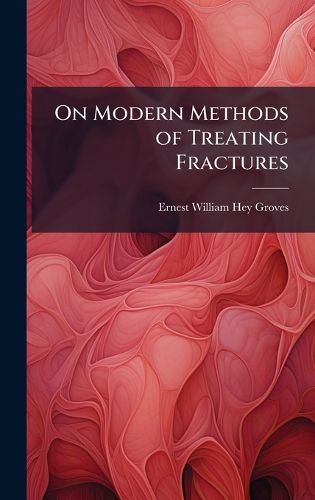Readings Newsletter
Become a Readings Member to make your shopping experience even easier.
Sign in or sign up for free!
You’re not far away from qualifying for FREE standard shipping within Australia
You’ve qualified for FREE standard shipping within Australia
The cart is loading…






"On Modern Methods of Treating Fractures" by Ernest William Hey Groves is a detailed examination of fracture treatment techniques developed and employed in the early 20th century. This book provides a comprehensive overview of surgical and non-surgical methods, offering insights into the principles of bone healing and the management of complications. It discusses various types of fractures, methods of reduction, fixation techniques, and post-operative care.
Groves' work is valuable for those interested in the history of medicine and orthopedic surgery. It provides a glimpse into the evolution of fracture management, showcasing the innovations and challenges faced by surgeons of the time. This book serves as an important historical reference for understanding the foundations of modern orthopedic practices.
This work has been selected by scholars as being culturally important, and is part of the knowledge base of civilization as we know it. This work was reproduced from the original artifact, and remains as true to the original work as possible. Therefore, you will see the original copyright references, library stamps (as most of these works have been housed in our most important libraries around the world), and other notations in the work.
This work is in the public domain in the United States of America, and possibly other nations. Within the United States, you may freely copy and distribute this work, as no entity (individual or corporate) has a copyright on the body of the work.
As a reproduction of a historical artifact, this work may contain missing or blurred pages, poor pictures, errant marks, etc. Scholars believe, and we concur, that this work is important enough to be preserved, reproduced, and made generally available to the public. We appreciate your support of the preservation process, and thank you for being an important part of keeping this knowledge alive and relevant.
$9.00 standard shipping within Australia
FREE standard shipping within Australia for orders over $100.00
Express & International shipping calculated at checkout
"On Modern Methods of Treating Fractures" by Ernest William Hey Groves is a detailed examination of fracture treatment techniques developed and employed in the early 20th century. This book provides a comprehensive overview of surgical and non-surgical methods, offering insights into the principles of bone healing and the management of complications. It discusses various types of fractures, methods of reduction, fixation techniques, and post-operative care.
Groves' work is valuable for those interested in the history of medicine and orthopedic surgery. It provides a glimpse into the evolution of fracture management, showcasing the innovations and challenges faced by surgeons of the time. This book serves as an important historical reference for understanding the foundations of modern orthopedic practices.
This work has been selected by scholars as being culturally important, and is part of the knowledge base of civilization as we know it. This work was reproduced from the original artifact, and remains as true to the original work as possible. Therefore, you will see the original copyright references, library stamps (as most of these works have been housed in our most important libraries around the world), and other notations in the work.
This work is in the public domain in the United States of America, and possibly other nations. Within the United States, you may freely copy and distribute this work, as no entity (individual or corporate) has a copyright on the body of the work.
As a reproduction of a historical artifact, this work may contain missing or blurred pages, poor pictures, errant marks, etc. Scholars believe, and we concur, that this work is important enough to be preserved, reproduced, and made generally available to the public. We appreciate your support of the preservation process, and thank you for being an important part of keeping this knowledge alive and relevant.